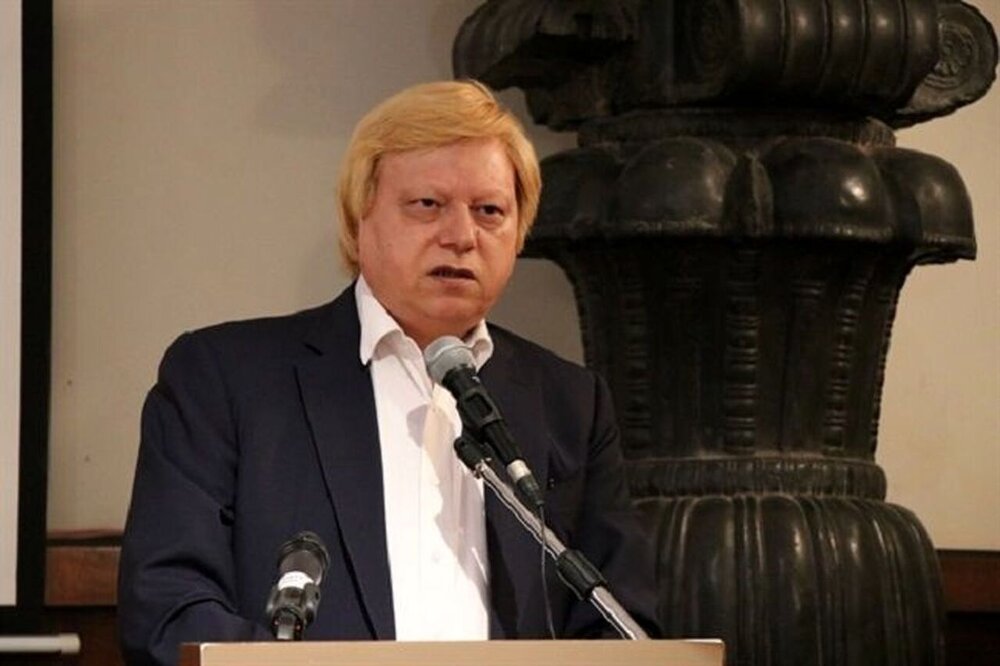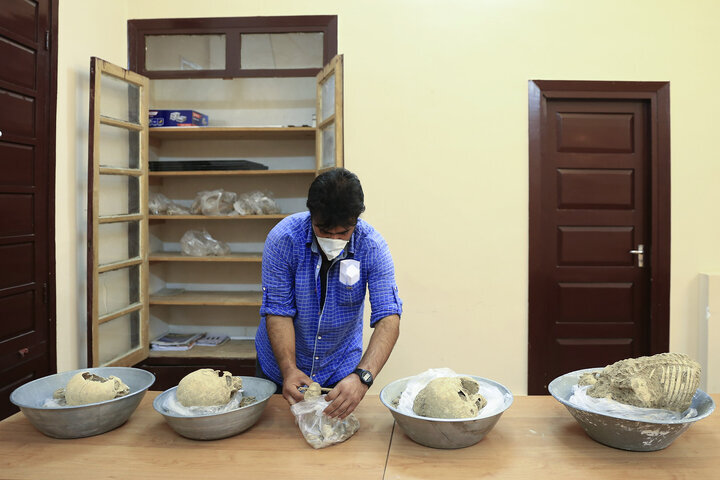'Newly-found skeletons may address bloody conflict during Alexander the Great’s invasion of Persia'

TEHRAN – A number of human skeletons, recently unearthed from ancient water ducts in Persepolis, maybe related to a bloody conflict between Persians (Iranians) and invaders led by Alexander the Great in c. 330 BC, an Iranian cultural heritage expert said on Sunday.
“The position of skeletons indicate that those people may not have been buried, but that they were killed and left in the waterways during a clash that may have been related to Alexander the Great’s invasion of Iran,” Seyyed Mohammad Beheshti said on Sunday.
Earlier this month, the remains of 13 ancient skeletons, 11 of which human remains, were discovered at olden water ducts of Persepolis, shedding new light on the way of life in the ceremonial capital of Achaemenid Empire (c. 550 -330 BC).
Beheshti, who is a member of Iran’s Supreme Council of Cultural Heritage and Tourism, also attached great importance to broadening international cooperation and to introduce the new findings in Persepolis on a wider global scale.
“[Widening] International cooperation lays the ground for [properly] introducing these scientific findings and research on Persepolis, which is a valuable achievement for the country’s cultural heritage.”
Tourism does not equal just having sightseeing in Persepolis and it’s only a part of the main missions that Cultural Heritage [body] has for this World Heritage site, the expert noted, talking to IRNA.
He considered three main missions in that regard: “Protection, research, and introduction of relics.”
“What has just been found in Persepolis has happened in the course of research on the World Heritage. Everything that is [now] presented to tourists is the fruit of [previous] researches, survey…. therefore, such findings should be presented in proper formats, including exhibits in the Persepolis Museum, and being combined with brochures, and [necessary] descriptions.”
Collaboration with the world completes our findings
Elsewhere in his remarks, Beheshti hailed Iranian researchers for having a great deal of expertise in the field of cultural heritage. He, however, said this expertise would be completed through vast international cooperation.
“Basically, the science in the field of cultural heritage is not very wide and for this reason, different countries and different research centers [should] cooperate with each other; because each one has its own strength and [special] abilities.”

“In archaeological research, new sciences are also been contributing to, and in terms of dating and accurate scientific specs, we have some facilities in the country and do not have some others…. therefore being satisfied with our own abilities is not enough when it comes to a comprehensive look.”
Impatience turns new findings to daily routine
“It should not be overlooked that such research that led to the recent discovery of skeletal remains is new, and it will take time to be matured and weighed against other researches, and finally [would] be able to speak definitively about them; Therefore, we must be careful not to look at them as a daily routine.”
Beheshti emphasized that the existing theories which are based on studies should be presented and hammered in scientific discussions, situations, and research circles, adding “After turning these findings into a scientific source, we can almost enter the field of [scientifically] present our achievements.”
“The recent discovery in Persepolis, which was announced on Mordad 26th (August 16), included human and animal skeletons found in the waterways of this World Heritage complex, has drawn [our] attention to the history and narrative behind these findings.”
It was first reported that 11 human skeletons and two dog skeletons were found during a dredging work on ancient water ducts near an uncompleted gate that leads to the courtyard of the Hall of 100 Columns. And later two more human skeletons were found, which increased the number of these finds.
The position of the bones indicates that these people may not have been buried, but that they were killed and left in the waterways during a clash that may have been related to Alexander the Great's invasion of Iran.
The finding of these human skeletons lays a serious responsibility on those involved in the field of cultural heritage and can open a new window to having a narrative and creative tourism and even open up new opportunities for literary tourism to this ancient site, he concluded.
Persepolis, also known as Takht-e Jamshid, whose magnificent ruins rest at the foot of Kuh-e Rahmat (Mountain of Mercy), was the ceremonial capital of the Achaemenid Empire. It is situated 60 kilometers northeast of the city of Shiraz in Fars Province.
The city’s immense terrace was begun about 518 BC by Darius the Great, the Achaemenid Empire’s king. On this terrace, successive kings erected a series of architecturally stunning palatial buildings, among them the massive Apadana palace and the Throne Hall (“Hundred-Column Hall”).
This 13-ha ensemble of majestic approaches, monumental stairways, throne rooms (Apadana), reception rooms, and dependencies is classified among the world’s greatest archaeological sites. Persepolis was the seat of the government of the Achaemenid Empire, though it was designed primarily to be a showplace and spectacular center for the receptions and festivals of the kings and their empire.
The city was occupied and burnt by Alexander the Great in 330 BC apparently as a revenge to the Persians because it seems the Persian King Xerxes had burnt the Greek City of Athens around 150 years earlier.
AFM/MG
Leave a Comment